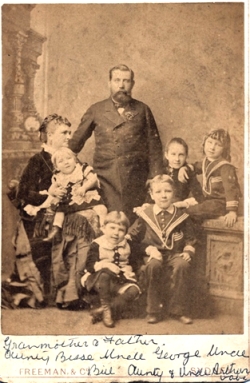One of the less visible aspects of the Glebe Society is its role in handling enquiries from the general public. Our website has improved the Society’s visibility and encourages browsers to contact us for further information.
On average, we handle about 50 enquiries a year. These are farmed out to members of the Management Committee or Subcommittee members (according to their expertise and interests) to research and respond.

A brief review of enquiries received over the past few years shows that, unsurprisingly, most of these requests come from family history researchers (of varied degrees of experience). However, we have also handled queries from care home leavers, students (mostly journalism, museum studies and history), television program producers, film-makers, heritage architects, and even a private investigator.
In many cases, particularly with family history researchers, we are able to provide correspondents with at least some information as well as suggesting other possible lines of enquiry or sources such as our ‘standard’ texts (Max Solling’s Grandeur & Grit and Bernard and Kate Smith’s The Architectural Character of Glebe) and/or providing guidance on where to find available written or photographic records (the City of Sydney’s website, the National Library’s Trove website, bodies such as the Marrickville Heritage Society).
An initial response sometimes leads to further correspondence with unexpected results. Family photographs have been emailed to us, adding to our understanding of past lives in Glebe.
For example, the first photo on this next page depicts Dr Arthur Annesley West who practised at Montrose and Derby House on Glebe Point Rd. In the photo, he’s with his family in 1884, shortly before his death at age 37. A descendant made contact through our website and sent us several photos, including the one on page 6.
In another example, a descendant of Michael Golden sent us the second portrait. Michael Golden was a member of the Glebe Company of Volunteers. Formed in 1860, they drilled in the university paddocks. Golden, who owned much of Leichhardt St, died in 1872. The Golden Estate was put up for auction in 1908. The family retained ownership of Margaretta Cottage and neighbouring Leichhardt Lodge until 1949.

Here is just a sample of some of the queries we have received:
- Why is Greek St so called?
- Was there an observatory at Glebe Point?
- Do you have a photograph of where ‘Plorn’ Dickens lived?
- Was Forsyth St named after my ancestor?
- Why is Hereford House listed at Foley Park and 53 Hereford St?
- Where can I find Camperdown Children’s Hospital records for 1929?
- Where was the Kosmon church in Glebe Point?
- Glebe house prices in 1960?
- Does the house my ancestor lived in still exist?
- Is there a connection between Jarocin in Poland and Jarocin Ave?
- Where was Anderson House hostel?
We recognise that their own family history is important to each individual researcher and we do our best to assist. We are not professional family history researchers but enthusiastic volunteers (who sometimes have other lives). However, we have had particularly heart-warming interactions with some who have contacted us:
- A request for help in assembling information for the 90th birthday of a father who grew up in Glebe.
- A query about whether access to Bidura was possible. This from the daughter of a former care resident.
- A request for identification of the site of a post-WWII wedding photograph. It emerged that in those economically-straitened times the bride (married at St Johns Bishopthorpe) shared her wedding dress with another family member (married at St James, Woolley St) four days later.
Whilst the majority of queries relate to Glebe’s heritage and history, we were also involved in helping to resolve some intriguing matters, for example:
- Assistance with identifying a sketch which the owner thought might be Blacket’s Great Hall at Sydney University. One glance at the roof suggested immediately that it was steeply pitched to allow snow to slide off. The answer turned out to be the Peace Palace in The Hague.
- Request for more information about 6 Lakeview Terrace, Glebe. This briefly challenged our understanding of Glebe’s topography and how names might change and evolve. The answer proved to be another Glebe in Ottawa, Canada.
Whilst working on providing helpful responses to enquiries takes time, our research has led to our learning even more about Glebe’s past and understanding linkages. Almost without exception, we have been rewarded with a grateful thank you from the enquirer.










One comment. Please add yours.
So nice to see that you have used the photo of Michael Golden on your site – happy to help promote the memory of a Glebe pioneer- my ggg grandfather!